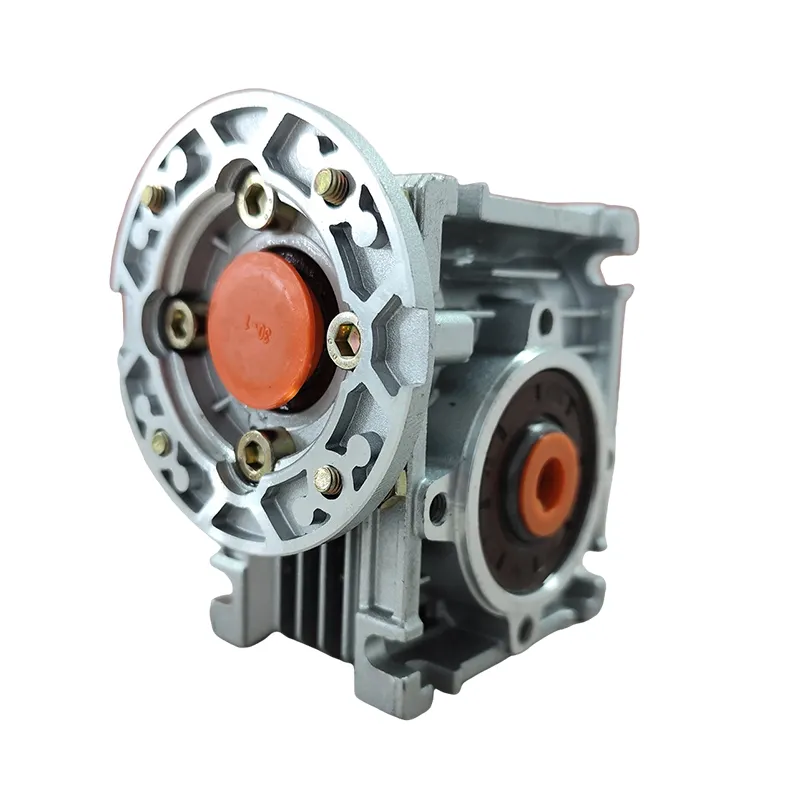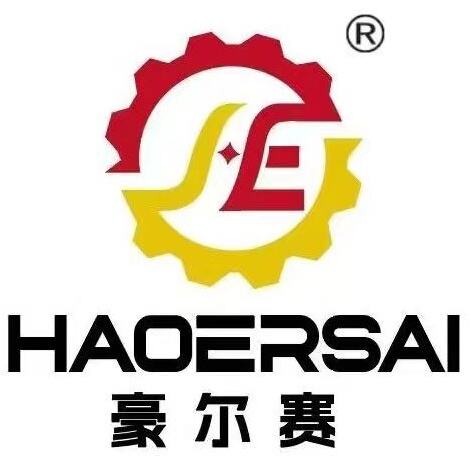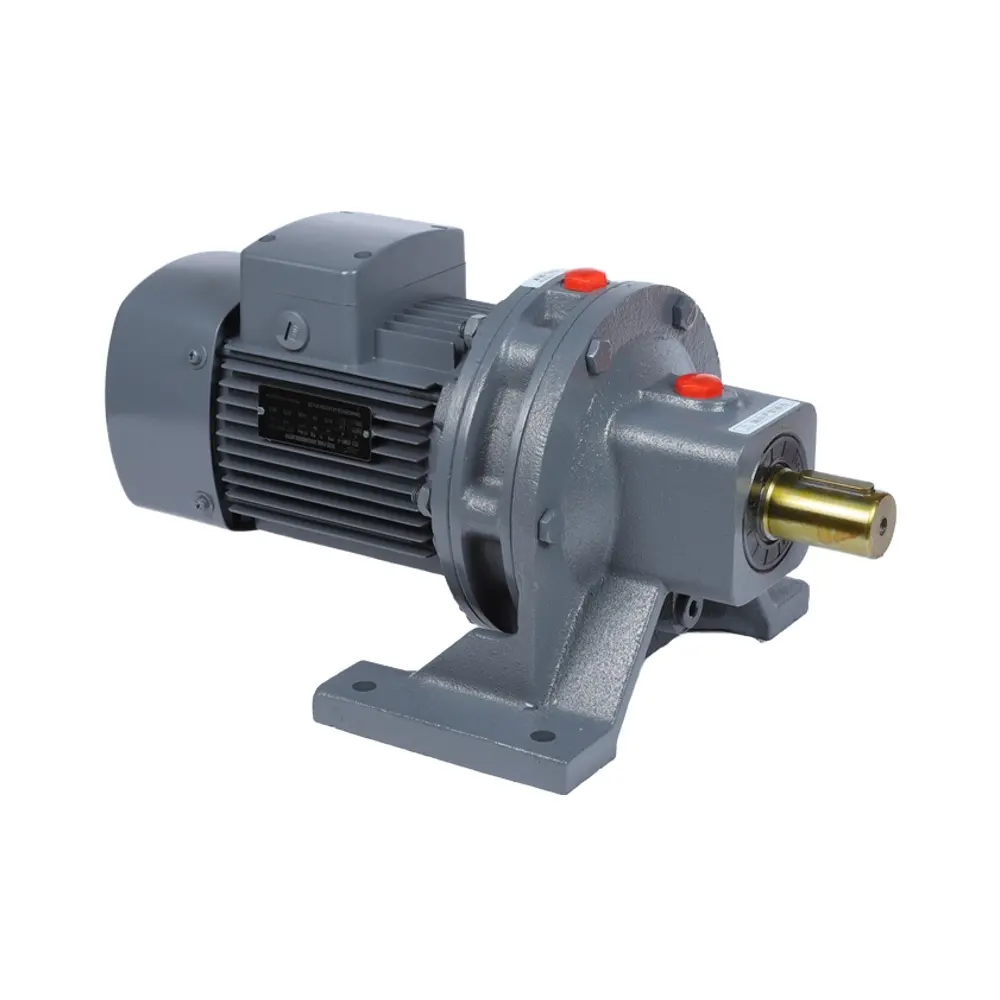Unlocking Efficiency Through Smarter Mechanical Design
Improving energy efficiency in mechanical systems often starts with one small but crucial component: the gearbox. Far from being a simple conduit between a motor and a driven load, a modern gearbox plays multiple roles — it changes speed and torque, compensates for misalignment, isolates vibration, and, when designed and specified correctly, reduces overall energy consumption across the system. This article explores how gearbox performance affects system-level efficiency, what design and maintenance choices matter most, and practical steps engineers and operators can take to optimize energy use.
Why Gearbox Efficiency Matters
The gearbox as an energy node
In almost every industrial drive train, the gearbox is a point where power is converted and transmitted. Mechanical losses in the gearbox — friction, churning of lubricant, seal drag, and gear meshing inefficiencies — translate directly into wasted input power. Choosing a high-efficiency gearbox reduces losses and improves the system's net output for the same motor input. The cumulative effect across many units or long operating hours can be substantial.
System-level energy implications
A gearbox that runs cooler and with lower losses reduces the thermal load on surrounding components and may allow smaller motors or less cooling capacity. This creates a cascade of energy savings beyond the gearbox itself. For facility managers aiming to reduce electricity consumption, paying attention to gearbox selection and maintenance is a cost-effective lever.
How Design Choices Influence Gearbox Performance
Gear geometry and surface finishing
Gearbox efficiency starts with the gear teeth. Optimized gear geometry — including proper tooth profile, helix angle, and contact ratio — minimizes sliding and rolling friction. Advanced surface finishing and coatings reduce micro-asperities that cause friction at the tooth contact. These design choices improve load distribution and lower heat generation during operation, directly improving gearbox efficiency.
Bearing selection and lubrication systems
Bearings inside the gearbox contribute to overall losses. Low-friction bearing types and correct preload settings reduce drag. Equally important is the lubrication method: splash, forced circulation, or oil mist systems each have performance trade-offs. Selecting the right lubricant viscosity and a proper lubrication system minimizes churning losses and wear, improving both immediate efficiency and long-term reliability.

Operational Factors that Affect Gearbox Efficiency
Proper alignment and installation
Even the best gearbox design cannot compensate for poor installation. Misalignment between motor, gearbox and driven equipment introduces additional bending loads and uneven contact in gear teeth, increasing friction and accelerating wear. Careful alignment during installation and periodic checks greatly influence running efficiency.
Operating point and load profile
Gearboxes are most efficient near their designed load and speed. Running a gearbox continuously at very low load, or frequently in transient overloading, can reduce overall efficiency. Selecting a gearbox rated for the expected duty cycle — including starts, stops, reversals, and shock loads — ensures that the gearbox operates in its optimal window more often.
Maintenance Practices that Preserve Efficiency
Scheduled inspections and condition monitoring
Regular inspections, vibration analysis, and oil analysis reveal early signs of inefficiency: gear wear, bearing deterioration, lubricant degradation, or contamination. Condition monitoring helps plan maintenance before losses escalate. Effective monitoring keeps the gearbox operating at peak efficiency and prevents expensive unplanned downtime.
Lubricant management and oil quality
Contaminated or degraded oil increases friction and accelerates deterioration. Establishing a lubricant management program — choosing the right oil grade, performing timely changes, and filtering out particulates — preserves gearbox geometry and reduces energy losses. Additive packages in modern lubricants also enhance load carrying capacity and lower friction.
Advanced Technologies Driving Gearbox Efficiency
High-precision manufacturing and asymmetric gears
Advances in gear manufacturing, such as hobbing precision, grinding, and asymmetric tooth profiles, enable gears that operate with less sliding and more rolling. These manufacturing improvements reduce contact losses and improve the mechanical efficiency of the gearbox across a wider load range.
Surface treatments and coatings
Surface engineering — nitriding, carburizing, DLC and other low-friction coatings — reduces wear and friction at gear flanks. When combined with optimized geometry, these technologies can boost gearbox efficiency noticeably, especially in high-load or high-speed applications.
Gearbox Role in Renewable and Distributed Energy Systems
Wind turbines and gearbox challenges
Wind turbine gearboxes must operate efficiently across varying speeds and loads. Gearbox losses in wind turbines represent lost captured energy. Design choices that reduce friction and improve lubrication at low speeds provide real energy recovery, increasing the net power delivered to the grid.
Gearboxes in microturbines and gensets
In distributed generation, gearboxes used in microturbines or engine-driven generators benefit from efficiency gains by allowing smaller prime movers or reducing fuel consumption for the same output. The gearbox choice thus ties directly to fuel efficiency and emissions, making it a critical component in sustainable energy systems.
Measuring and Specifying Gearbox Efficiency
Standard metrics and testing methods
Gearbox efficiency is commonly measured as the ratio of output power delivered to input power supplied, often expressed as a percentage. Testing under representative torque and speed conditions produces meaningful efficiency curves. When specifying a gearbox, ask for manufacturer test data showing efficiency across the expected operating range.
Life-cycle and total-cost assessments
Evaluating a gearbox solely on purchase price can be misleading. Life-cycle cost analysis that includes energy losses, maintenance, downtime, and replacement frequency gives a truer picture of economic value. A slightly more expensive, higher-efficiency gearbox can pay back its premium many times over through lower energy bills and fewer failures.
Control Strategies that Complement Gearbox Efficiency
Variable speed drives and matching gearbox selection
Using variable speed drives (VSDs) allows motors to run at optimal speed and torque for the load, reducing unnecessary energy consumption. Pairing VSDs with gearboxes selected for responsive load sharing maximizes system efficiency. The gearbox must tolerate the dynamic ranges imposed by the drive without compromising tooth contact or lubrication.
Predictive control and adaptive systems
Smart controls that monitor load and adjust operating parameters can keep a gearbox operating near its most efficient point. Adaptive systems that alter gear train behavior — for example by switching gear stages in multi-speed gearboxes — help maintain high efficiency across variable operating conditions.
Practical Steps to Improve Gearbox Efficiency in Existing Installations
Audit and baseline measurement
Begin with an energy audit that measures input/output power, operating temperatures, vibration, and oil condition. Establish a baseline to quantify potential savings from upgrades. This data-driven approach highlights the areas where gearbox improvements yield the greatest energy returns.
Retrofitting and upgrades
Simple retrofits — improved seals, lower-viscosity lubricants, upgraded bearings — can reduce parasitic losses. In some cases, replacing an older gearbox with a modern, high-efficiency unit is justified by the energy savings and reduced maintenance requirements. Always evaluate upgrades with careful engineering analysis and life-cycle cost modeling.
Environmental and Regulatory Impacts
Reducing carbon footprint through better gearboxes
Lowering energy losses in gearboxes directly cuts electricity consumption and associated carbon emissions for electrically driven systems. For fossil-fueled prime movers, improved mechanical efficiency reduces fuel consumption and greenhouse gas output. In regulated industries, these efficiency gains support sustainability targets and compliance obligations.
Incentives and efficiency standards
Many regions offer incentives or rebates for energy-efficient equipment, and some industries must meet regulatory standards for efficiency. Choosing gearboxes that comply with relevant standards and qualify for incentives can offset initial investment costs and improve return on investment.
Common Misconceptions About Gearbox Efficiency
Bigger is always better
A common misconception is that a larger gearbox or heavier gears automatically mean higher efficiency. In reality, oversizing can cause suboptimal contact conditions at low loads and increase parasitic losses. Properly sized and specified gearboxes perform better.
Lubricant choice is minor
Some assume lubricant selection is a minor detail. In fact, lubricant viscosity, additive chemistry, and condition are major drivers of both frictional losses and wear rates. Selecting and managing lubricant is a key part of gearbox efficiency strategy.
Integrating Gearbox Efficiency into Design Practices
Early-stage integration in system design
To get the maximum benefit, consider gearbox efficiency during initial system design rather than as an afterthought. Co-optimizing motor, gearbox, and driven load allows selecting combinations that achieve higher overall efficiency than optimizing components individually.
Cross-disciplinary collaboration
Mechanical engineers, controls engineers, and maintenance teams must collaborate to select the right gearbox and implement strategies that maintain efficiency in the field. Practical knowledge from maintenance crews informs realistic operating profiles that feed back into better gearbox selection.
Economic Case Studies and ROI Modeling (Generic Examples)
Small pump system upgrade
Replacing an aging, low-efficiency gearbox in a pump system with a high-efficiency unit and optimized bearings can reduce motor load by several percent. Over years of continuous operation, these savings pay back the retrofit cost through lower energy bills.
Multi-unit factory deployment
In factories with dozens of similar drives, standardizing on a higher-efficiency gearbox model reduces aggregate energy consumption substantially. Centralized procurement can also secure better pricing, shortening the payback period.
FAQ
How much energy can be saved by improving gearbox efficiency?
Even modest improvements in gearbox efficiency — for example 2–5% — can yield significant energy savings over time, especially in continuous-duty applications. The exact savings depend on operating hours, load profile, and the number of units in service.
What are the most cost-effective upgrades to improve gearbox efficiency?
Start with lubricant upgrades, bearing replacements, and alignment corrections. These measures are relatively low cost and often produce measurable efficiency gains. Condition monitoring and timely maintenance are also highly cost-effective.
How do I measure gearbox efficiency onsite?
Measure input and output power accurately using inline power meters, and calculate the efficiency ratio. Complement power readings with temperature, vibration, and oil condition data to get a full picture of performance and losses.
When should a gearbox be replaced rather than repaired?
Replace a gearbox when wear or damage causes persistent high losses, when maintenance costs exceed a replacement threshold, or when a newer high-efficiency model provides a favorable lifecycle cost and ROI. Perform life-cycle cost analysis to make data-driven decisions.
Table of Contents
- Unlocking Efficiency Through Smarter Mechanical Design
- Why Gearbox Efficiency Matters
- How Design Choices Influence Gearbox Performance
- Operational Factors that Affect Gearbox Efficiency
- Maintenance Practices that Preserve Efficiency
- Advanced Technologies Driving Gearbox Efficiency
- Gearbox Role in Renewable and Distributed Energy Systems
- Measuring and Specifying Gearbox Efficiency
- Control Strategies that Complement Gearbox Efficiency
- Practical Steps to Improve Gearbox Efficiency in Existing Installations
- Environmental and Regulatory Impacts
- Common Misconceptions About Gearbox Efficiency
- Integrating Gearbox Efficiency into Design Practices
- Economic Case Studies and ROI Modeling (Generic Examples)
- FAQ

